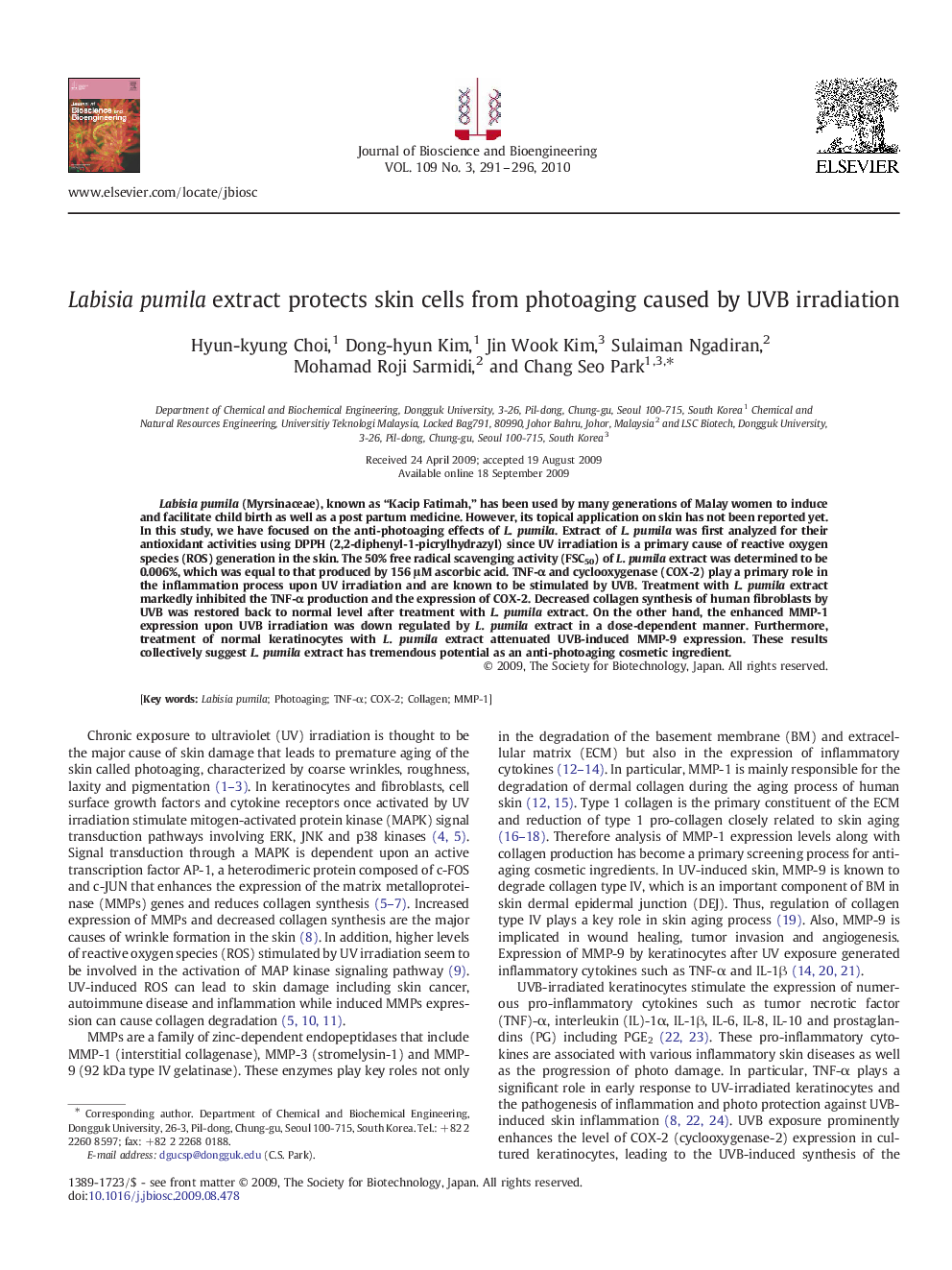| Article ID | Journal | Published Year | Pages | File Type |
|---|---|---|---|---|
| 21469 | Journal of Bioscience and Bioengineering | 2010 | 6 Pages |
Labisia pumila (Myrsinaceae), known as “Kacip Fatimah,” has been used by many generations of Malay women to induce and facilitate child birth as well as a post partum medicine. However, its topical application on skin has not been reported yet. In this study, we have focused on the anti-photoaging effects of L. pumila. Extract of L. pumila was first analyzed for their antioxidant activities using DPPH (2,2-diphenyl-1-picrylhydrazyl) since UV irradiation is a primary cause of reactive oxygen species (ROS) generation in the skin. The 50% free radical scavenging activity (FSC50) of L. pumila extract was determined to be 0.006%, which was equal to that produced by 156 μM ascorbic acid. TNF-α and cyclooxygenase (COX-2) play a primary role in the inflammation process upon UV irradiation and are known to be stimulated by UVB. Treatment with L. pumila extract markedly inhibited the TNF-α production and the expression of COX-2. Decreased collagen synthesis of human fibroblasts by UVB was restored back to normal level after treatment with L. pumila extract. On the other hand, the enhanced MMP-1 expression upon UVB irradiation was down regulated by L. pumila extract in a dose-dependent manner. Furthermore, treatment of normal keratinocytes with L. pumila extract attenuated UVB-induced MMP-9 expression. These results collectively suggest L. pumila extract has tremendous potential as an anti-photoaging cosmetic ingredient.
